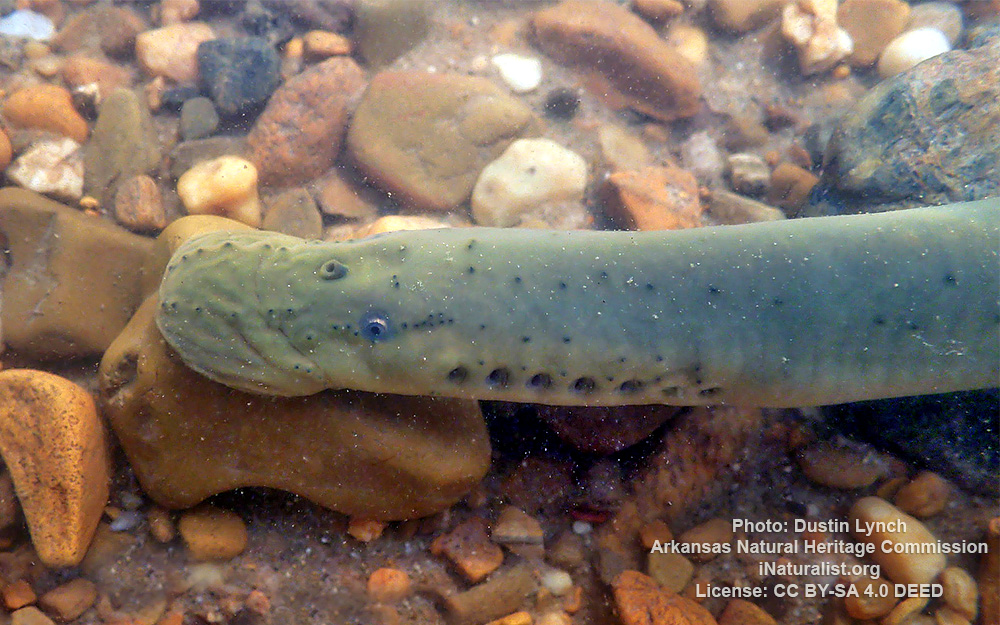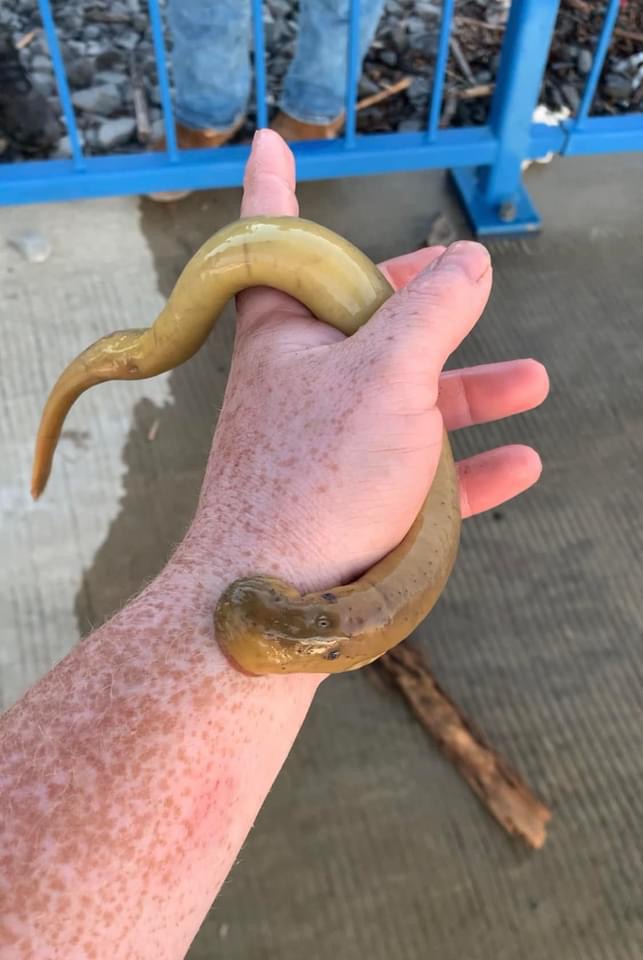Chestnut lamprey
(Ichthyomyzon castaneus)

Image source: Dustin Lynch | inaturalist.org
Classification
General data
The chestnut lamprey has a maximum length of around 38 centimetres (15 in), with a tan to yellowish-olive hue above, the sides, belly, and fin lighter. They are blue-black just after spawning.
The jawless mouth expands wider than the head, with many firm slender teeth, typically 4 lateral bicuspids on both sides of the innermost row, in front of which are 6–11 sharp cusps, and 2–3 anterior to the mouth. It has a long dorsal fin and no paired fins.
The range of the chestnut lamprey extends from Lake Winnipeg and the Hudson Bay down the Mississippi River to the Central and Eastern United States; this includes any large lakes or reservoirs where large host fish are present.
In Canada, the chestnut lamprey has been found in Saskatchewan, Manitoba, Ontario, and Quebec.
Larvae can be found in pools and backwater over sand and sandy mud.












